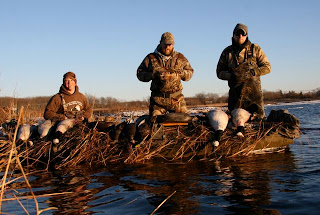I was asked by a new found watefowling friend, Jordan LaMay, founder of J&R Game Calls, to try out a couple of the duck calls he makes. He is relatively new to the call making game and trying to spread the word and build his business. He offered to send me a couple calls in exchange for me to review and a little help spreading the word in my area. Being the addict of all things waterfowl, How could I pass this up?
Jordan, a lifelong waterfowler like myself, started building his calls somewhat out of boredom and somewhat out of sentiment. He was home on winter vacation during the winter of 2010 and decided to dust off the lathe and turn a call or two. The sentimental part comes from the wood he used. His black lab, Gunner, was buried under a maple tree in their yard and he decided to use wood from that tree to turn some of his first calls. A cool way to keep bringing his dog with him every time he hunts! Turning calls became an addiction and soon after, J&R calls was born. Jordan is currently a junior at SUNY Canton and runs his shop from his home in Ogdensburg, NY. In addition to duck calls, J&R makes calls for geese and big game.
As I stated, I am picky about the calls I use, I am probably more selective than the ducks I am trying to lure in, so I wasn't sure what to expect, but was very delighted the first time I used one of J&R's calls. They are easy to blow and have a great output; not too loud, not too quiet, just right! I also like a call with a little bit of rasp which J&R's calls have. From high-balling to chuckling they sound good. The bottom line is, they sound like a hen mallard, so what you should look for?
For my entire waterfowling career I have been using duck calls made by another company, which started small and has grown into a colossal industry including many videos and a couple tv shows, including a reality show showcasing the family and business. In my opinion (and trust me, I wouldn't say this if I didn't mean it!), J&R's calls sound just as good, and Jordan has the potential to rise to the ranks of the big time call makers.
If you're looking for a couple new calls for next duck season I recommend trying out J&R game calls. They look good, but more importantly they sound great, plus you'd be helping a new small business grow! I will definitely be bringing my two J&R duck calls with me starting and next October and might have to order a goose call to match.
Check out J&R's website at www.jandrgamecalls.com or give him a call at 315-528-9707. They can also be found on facebook under J&R game calls. You won't regret it!
A shot of the two beautiful calls Jordan sent my way.

















































